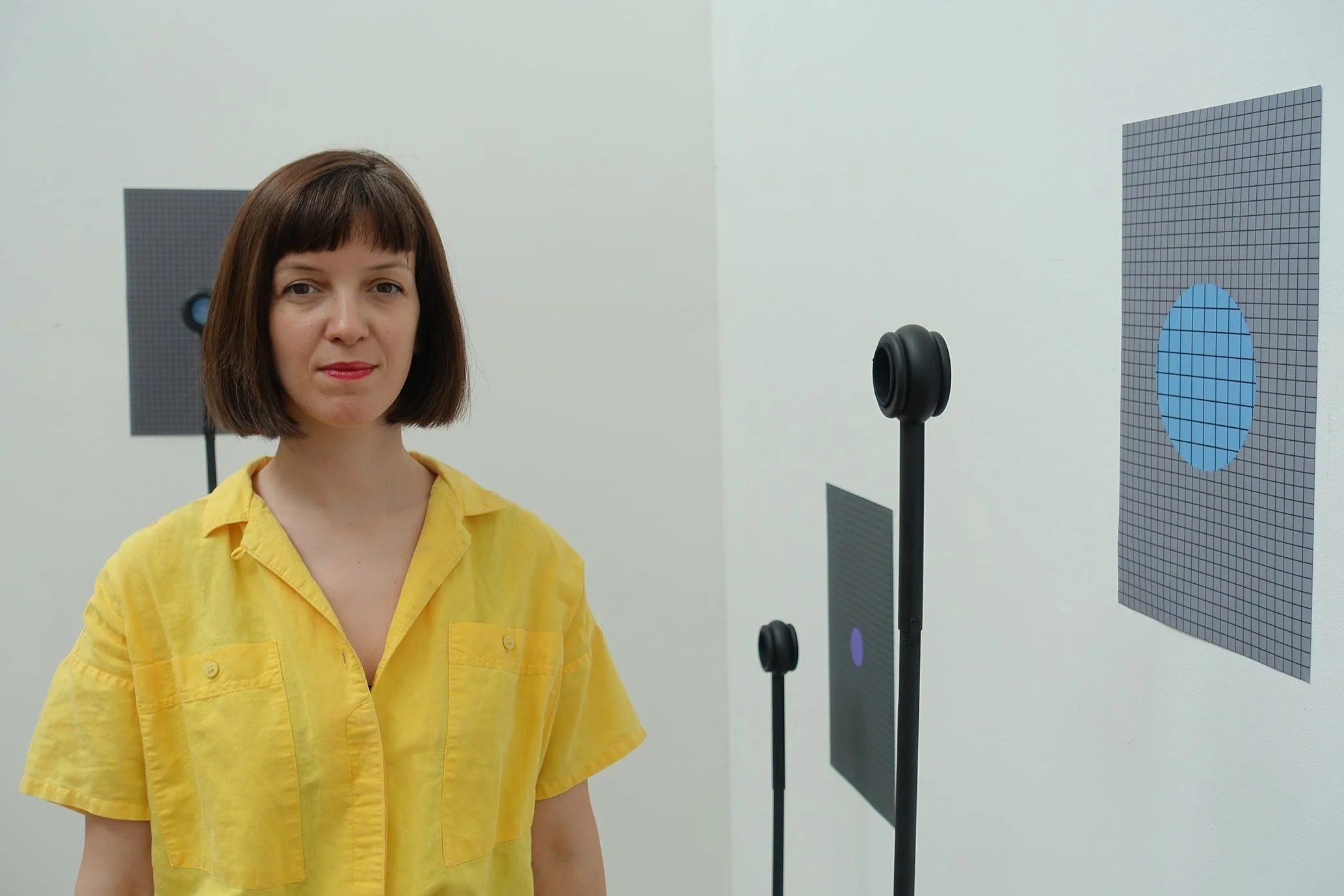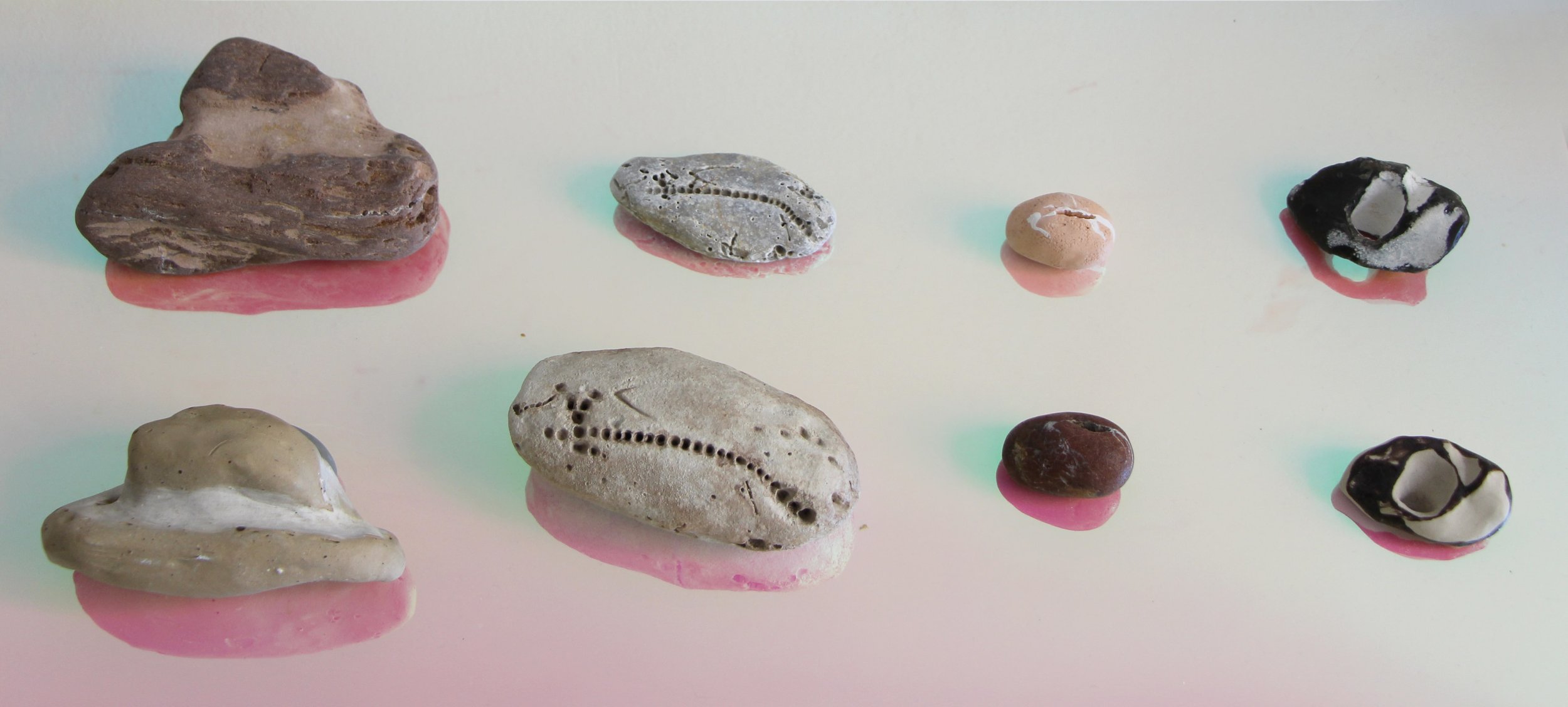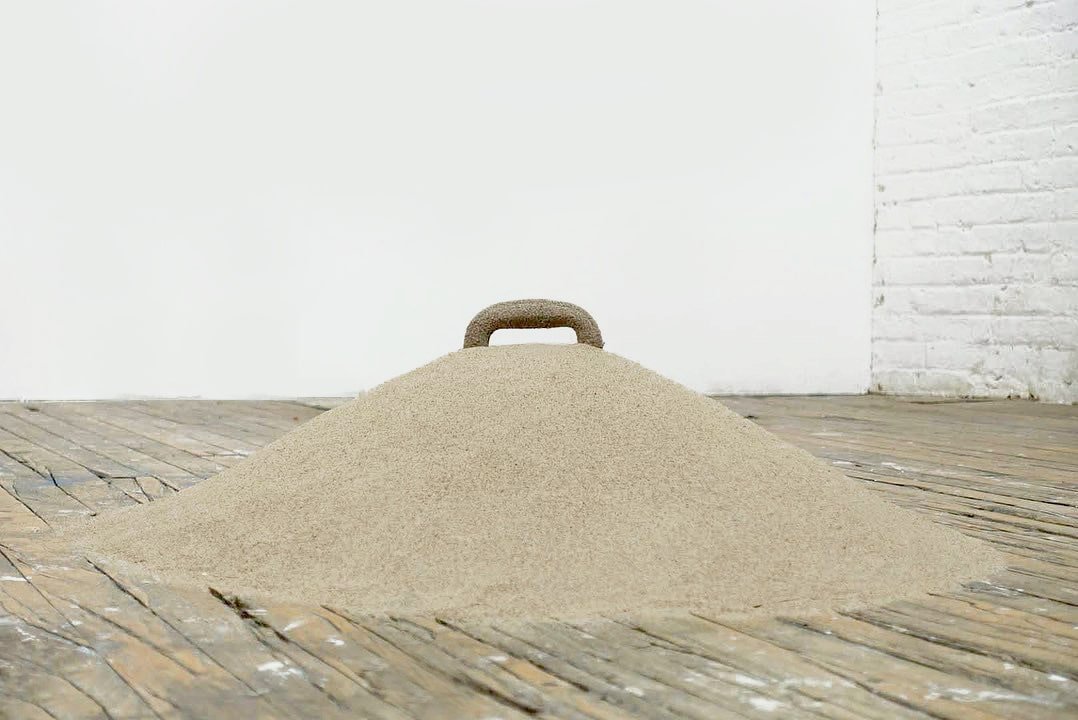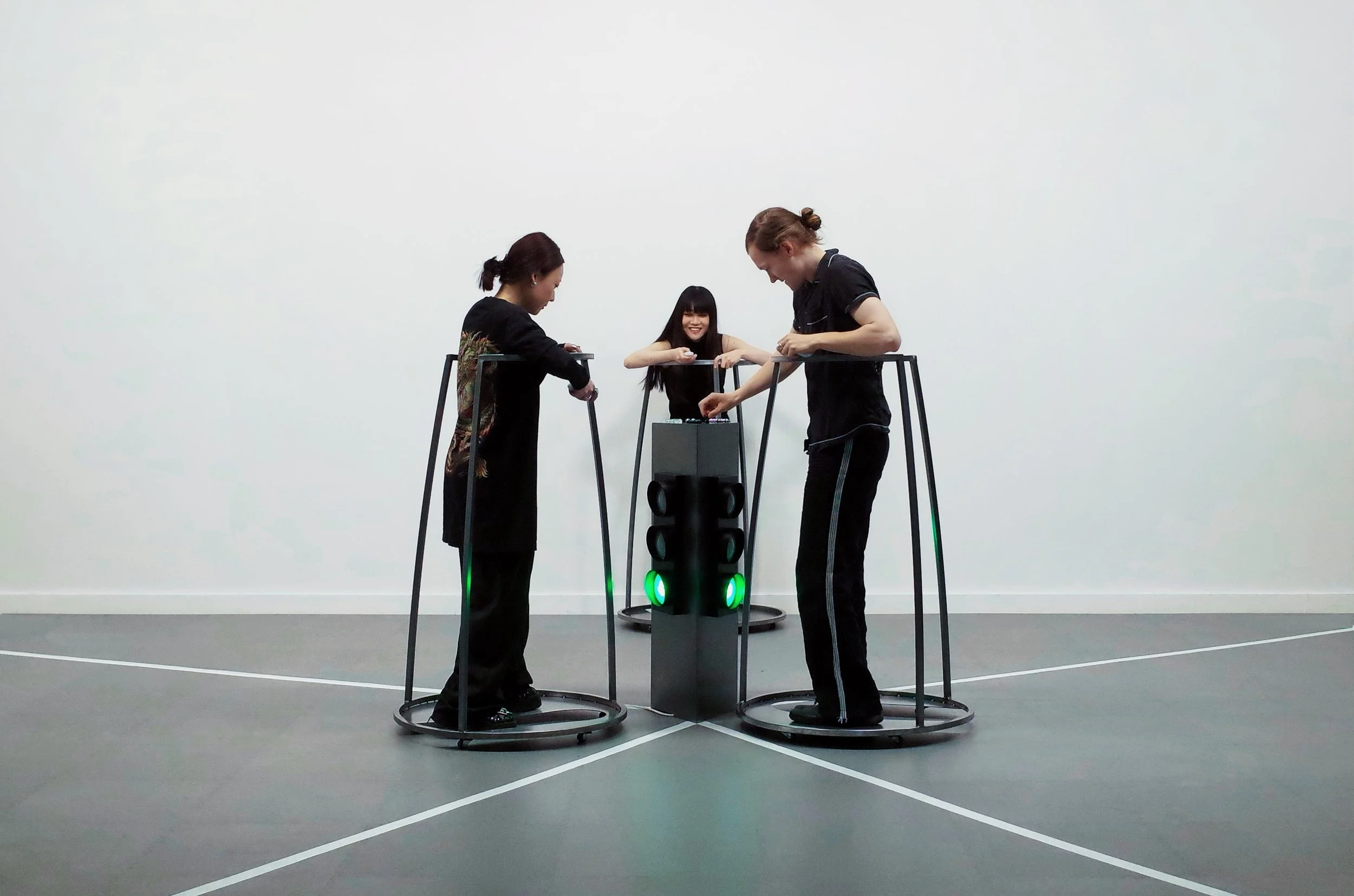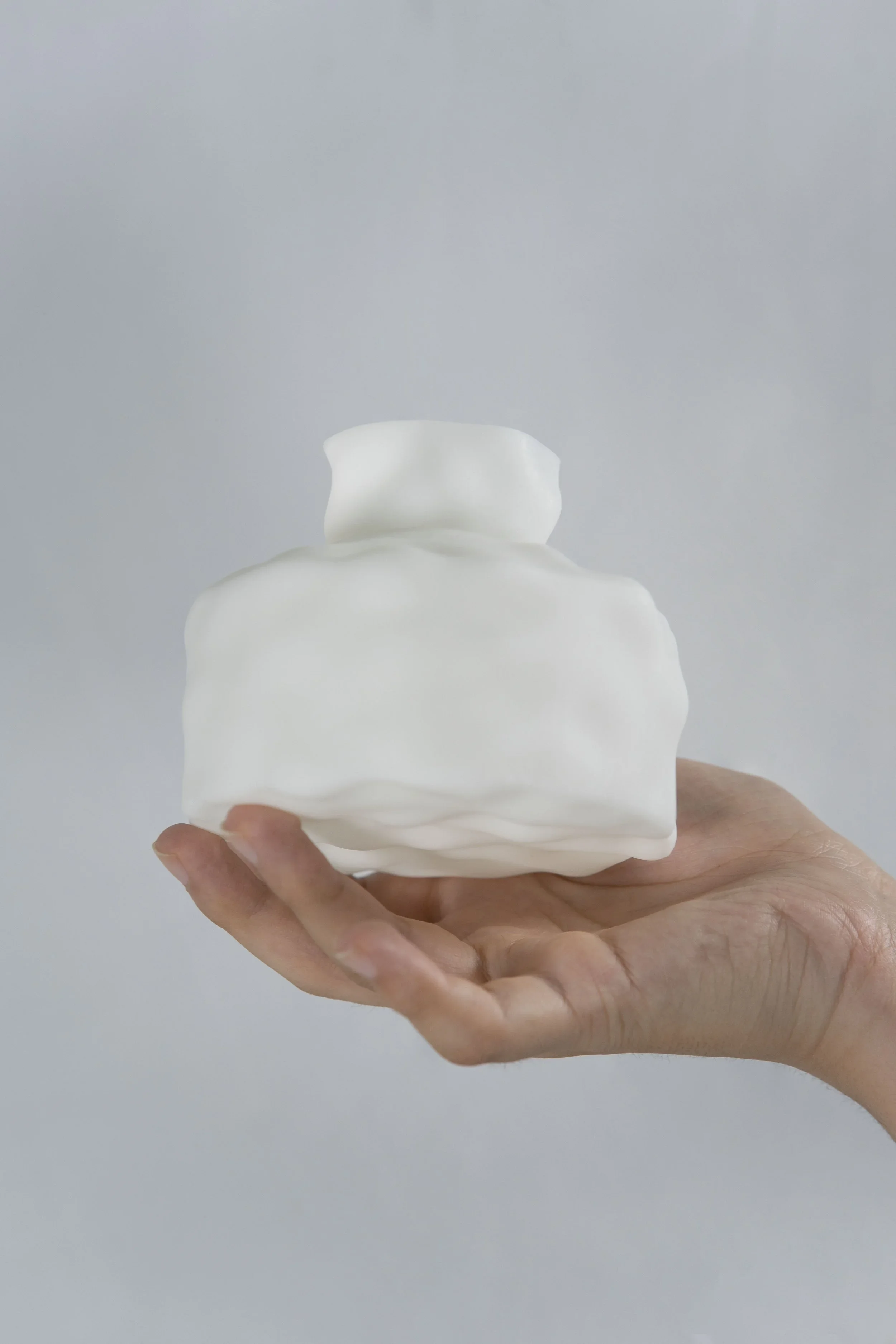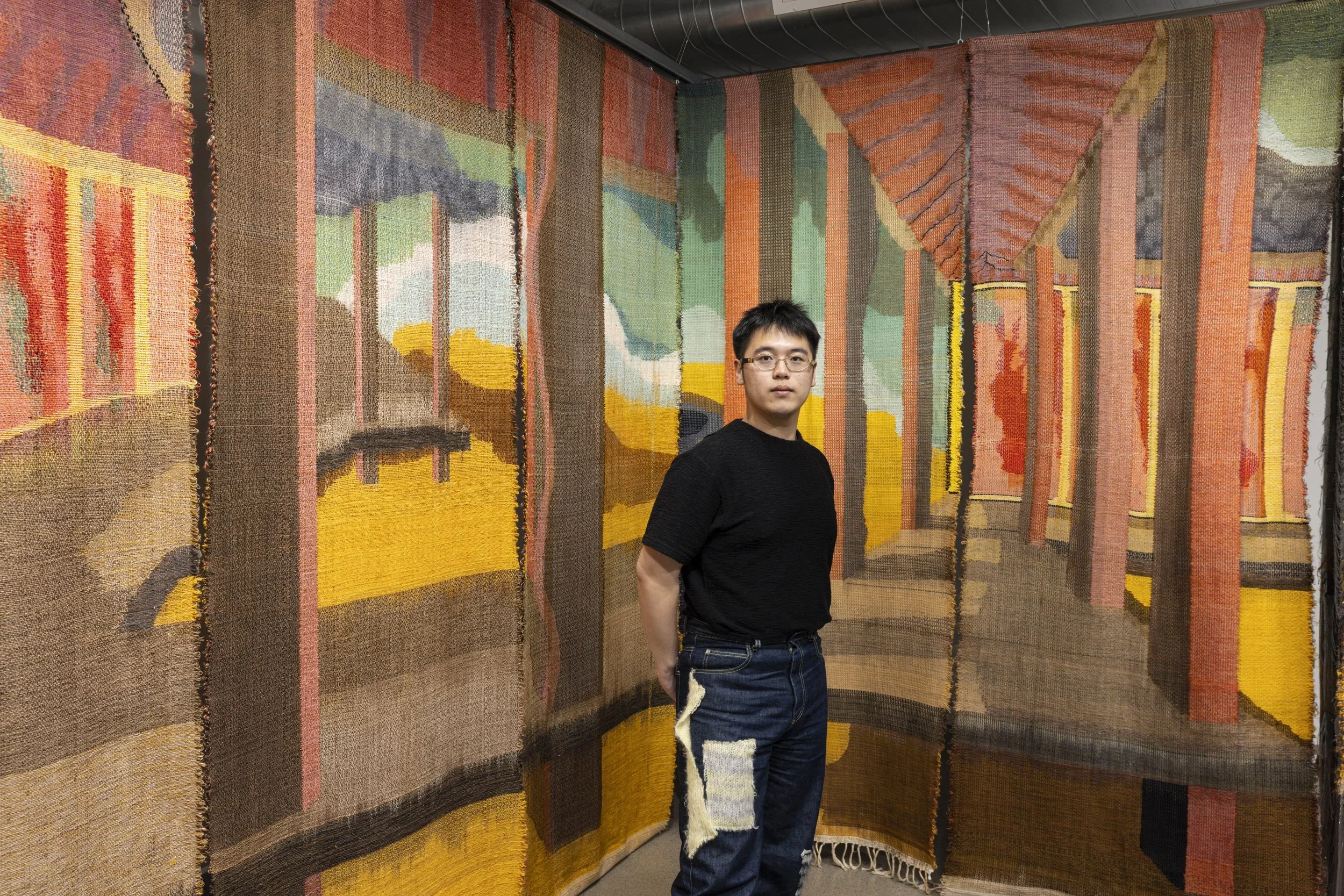10 Questions with Sümer Sayın
Born in Istanbul, Sümer Sayın is an artist based in Berlin. After her studies at Marmara University, Faculty of Fine Arts, she received her MFA in Oslo Art Academy in 2010. She had solo shows in DEPO Istanbul; Reiter Gallery Berlin; Sabrina Amrani Gallery Madrid, and Art ON Istanbul, among others. She took part in international biennials such as Sinopale 8 and 4, Rendez-Vous, 13e Biennale de Lyon, and Nights of Museums and Galleries, Plovdiv. She participated in artist residency programs, including ISCP New York, Cité International des Arts, Paris, and Dos Mares, Marseille. She is the recipient of the Neustart Kultur Stipendium, Stiftung Kunstfonds in 2022 and 2020, the Istanbul Rotary Club Art Prize in 2017, and the O’Art Prize in 2016.
Sümer Sayın - Portrait
ARTIST STATEMENT
Sümer Sayın is an interdisciplinary artist, working primarily with sculpture and installation. She makes interventions into found objects, using geometric elements, reflections, repetitions, and loops, altering their composition and function. By re-constructing some of the elements they are composed of, she assigns them new contexts and layers of meanings. Her work incorporates the investigation of how our knowledge and perception are constructed and often have conceptual layers that relate to philosophical, scientific, or social themes such as reality and illusion, the perception of time and space, subjectivity, freedom, borders, and power.
Action Plan, Swing Installation, 2017 © Sümer Sayın
Get your limited edition copy now
INTERVIEW
Let's talk about yourself first. Why are you an artist, and how did you become one?
I have always enjoyed drawing, being creative, and making something with my hands. In my school years, besides art, I was simultaneously interested in many other fields, like science, music, philosophy, design, and so on, and I struggled with some indecisiveness in choosing the right career path. But in the end, I assumed this indecisiveness was the verification that being an artist was the right choice for me, as it is so free, open, and wide that it could involve elements or impressions from all those fields, as much as I wanted them to.
You already have an impressive career, with exhibitions and residencies worldwide. What is your favorite memory as an artist so far?
Thank you. Hard to pick one, but probably my most exciting memory is when I won the ResArtis award for a residency in NYC, very early in my career, in a totally unexpected way, right after I received my MFA degree in Oslo. I participated back then in 2009 in the Mediterranean Young Artists Biennale in Skopje. My work was a wall drawing that was exhibited away from the main exhibition spots, quite hidden from sight. While I thought nobody probably saw my work, I learned I received this award. I then spent a few weeks in New York, had the chance to have a small show, and participated in a trip to Ontario Lakes. It was my first time overseas, and I had so many new impressions and met lovely people there with whom I still haven't lost contact. I think that's the magic of NY, and it was great to be back again this year for ISCP's residency program.
A Spectrum Of Unknown Territories, paper tape, books, mirrors, 120x120 cm, 2022 © Sümer Sayın
One Way Or Another, wood, mirror, violin parts, 2022 © Sümer Sayın
How would you define yourself as an artist? And how has this definition changed over the years?
I studied painting at university. I have never defined myself as a painter, though, because I kept exploring different materials and mediums. I am working now mostly with sculpture and installation, but I do not really limit myself to one material. I use found objects, wood, metal, ceramics, mirrors, photographs, sound, light. Art helps me to show the connections I build between impressions I have over a variety of things and thoughts. In that sense, I could maybe define myself as a visual poet.
You are an interdisciplinary artist, mainly working with sculpture and installation. What messages are you trying to communicate with your art? And what do you think differentiates your approach from others?
I am trying to make sense of the world in my own way and explore how our perception is constructed, reshaping and re-organizing what we are accustomed to seeing. I investigate the way conventional systems work, re-assemble elements that constitute them, and open up a playful space where new connections emerge. I apply formal transformations on objects and signs that define our surroundings to change their context and add new layers of meaning. I dismount, re-assemble, add parts, remove parts, displace elements, add reflections, etc. In a way, these formal transformations create a subtle link to concepts related to social, existential, philosophical, or/and scientific issues that interest me as an artist, such as relativity, subjectivity, time, space, power, borders, freedom, hope, uncertainty, migration, among others.
Access, 3D prints (alumide), 2017 © Sümer Sayın
In your work, your mix found objects with geometrical elements and grids that help resignify the objects. How did you come up with this idea?
Measuring is dividing into equal parts, and this is how we try to make sense of something big. This is how we define time and space from our perspective. To measure a day, we divide it into hours, minutes, seconds, and milliseconds. To measure a distance, we use meters, centimeters, millimeters, feet, inches, etc. All these units are kind of grids. They depend on and are defined by the scale we observe the world with our senses. So for me, using grids and geometrical elements is a way to show the observer's perspective is always present. By manipulating the size, the direction, and the placement of the intervals or geometrical connections, you can also change this pre-defined perspective, thus, the meaning.
You also address various themes, such as reality and perception, freedom, borders, and power. What do you think is the role of art in addressing such relevant themes?
I think it is hard to escape these themes as they are really essential to being a human in this world. I believe art can sweep away cliches and bring a fresh breeze into people's minds, which will make the world less boring and more interesting. Art can make the unseen visible and the ordinary exciting.
How has your art evolved over the years? And what inspired you to experiment?
I value intuition, non-sense and free connotations even more now. I think my art has become more open over the years. Or that's how I want it to be. If we were able to explain each aspect of a work perfectly with words, there would be no need for art. Sometimes we discover the reason why we used a certain element in our work after a certain time, looking backward. Art is not about making sense. It is rather about breaking boundaries and thinking outside of the box.
Your Untitled Stone, 2020 © Sümer Sayın
Your Untitled Stones, stones, ceramics, 2020-2022 © Sümer Sayın
You have exhibited extensively, both in galleries and museums. What do you think of digital exhibitions and presentations? Are you experimenting with these as well?
I have recently participated in Sinopale (Sinop Biennial), which happened digitally this year, because of Covid. The main theme was "Upcycling", and a selection of artists who had participated in earlier versions of Sinopale ware invited to reinterpret their older work and exhibit it on the biennial's online platform, along with the archive, artist talks, and other online events. I created sculptures based on my older photographs of an islet in Sinop and made a digital constellation with them. I think the internet is a great tool for artists to share their work, and their events and to interact with their audience. Nevertheless, it is not a substitute for actual physical space for me.
What do you think of the art community and market? And how do you keep your collectors and peers engaged with your art?
The art community and market certainly bring vibrancy to the art world. People need art, and artists need to pay their bills. However, the market is as speculative as any other market, and many good artists are not visible enough. Some artists shape their artistic production around what sells, even when it is not a conscious decision. I think the collectors should take the chance to look more into independent art scenes to get to know the artists outside of this bubble. I have participated in art fairs and commercial gallery shows, but I try not to focus or depend on the sale of my artworks. I rather try to be part of good projects, participate in funded residency programs, and get sponsorships and stipends for my artistic production. If I sell an artwork, it is a good bonus that makes me happy. Collectors and anyone interested in my art could visit my website www.sumersayin.com or follow me on IG @sumersayin.
The Uneasy Wait, 100 liter sand, handle, 2022 © Sümer Sayın
And lastly, what are you working on now? Do you have any new projects or exhibitions you want to tell us about?
I am currently working on an installation that combines both organic and geometric elements with parts of musical instruments. I am also working on creating versions of "A Landscape of Unknown Territories" as a bigger installation. I got accepted to the Zaratan residency program in Lisbon next year, where I am planning to develop this project further.

